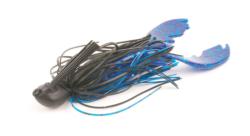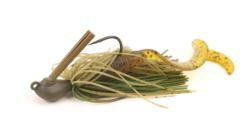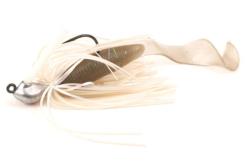Seasonal Patterns: Swimming a jig

Looking for a versatile lure for summertime bass fishing? Kellogg’s Frosted Flakes pro Dave Lefebre suggests you take a look at the swim jig.
“A swim jig is one of the most efficient baits in existence for a tournament fisherman,” he says. “It casts extremely well, hooks nearly every fish that hits it, and, once I have it rigged correctly, I rarely have to fool around with fouled-up presentations. It’s great in areas where there’s a lot of fishing pressure, and it works in clear to muddy water.”
Below are Lefebre’s top suggestions for choosing and using a swimming jig:
 Picking colors
Picking colors
Lefebre’s primary swim jig is a lure he helped design: the TABU Tackle Open Water Series jig. He keeps his color selection simple.
“It’s absolutely true that the best colors for most lures are darker hues on cloudy days and light, transparent colors on bright sunny days,” the pro says.
• Cloudy days: black and blue or black with red accents
• Clear water and sunny days: soft shell, watermelon red or blue crab
 Picking a trailer
Picking a trailer
Lefebre sticks to a few basics for a large percentage of his swimming jig trailers.
• Open-water jig swimming for spotted bass: white, smoke, and chartreuse grubs and chunks
• Swimming around grass: small chunks and Yamamoto Single Tail or Double Tail grubs
• Muddy water: large black or white flapping craws
• Clear water: a grub that matches the color of the jig
 Retrieval methods
Retrieval methods
Lefebre’s methods for retrieving a swim jig vary from day to day, and often from species to species.
For spotted bass: Use a slow, steady retrieve.
• For largemouths in the grass: Use a medium-fast, steady retrieve right below the surface.
• For bass around shallow cover in muddy water: Experiment with pumping the lure up under the surface and dropping it around targets.
“A swim jig is still a jig,” Lefebre says, “so you can drop it around cover and work it like a normal flipping jig.”